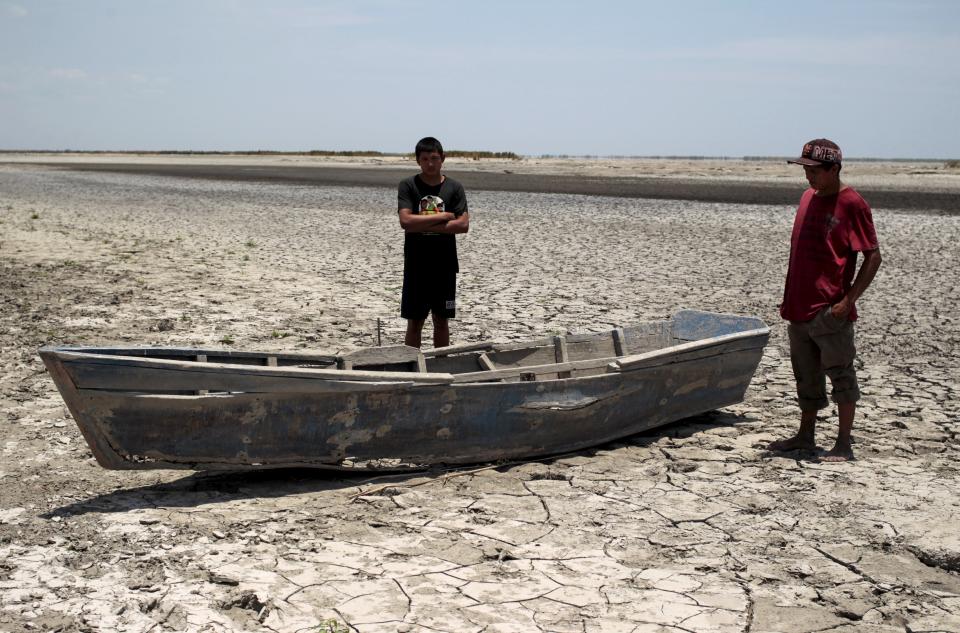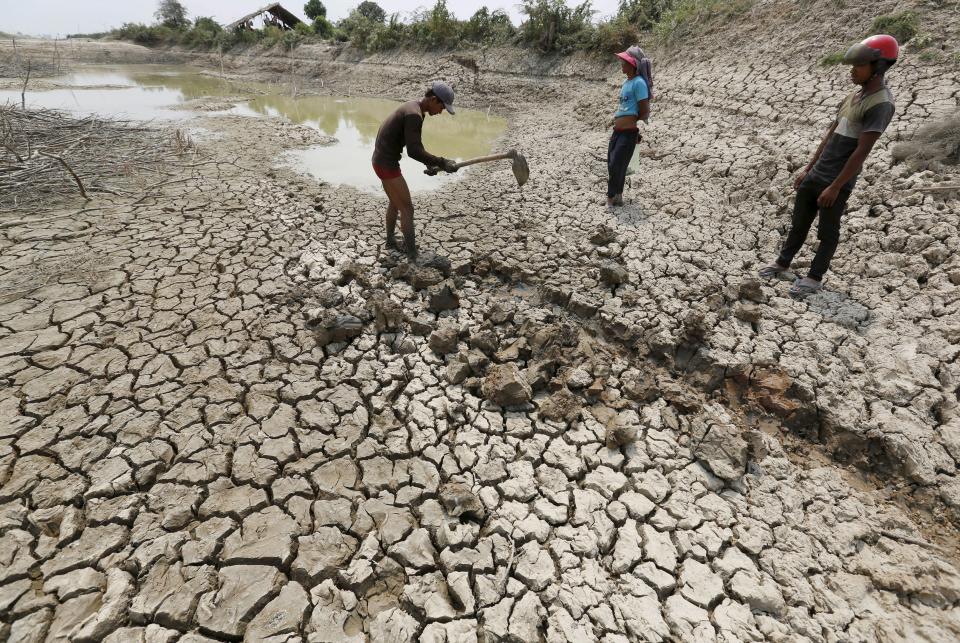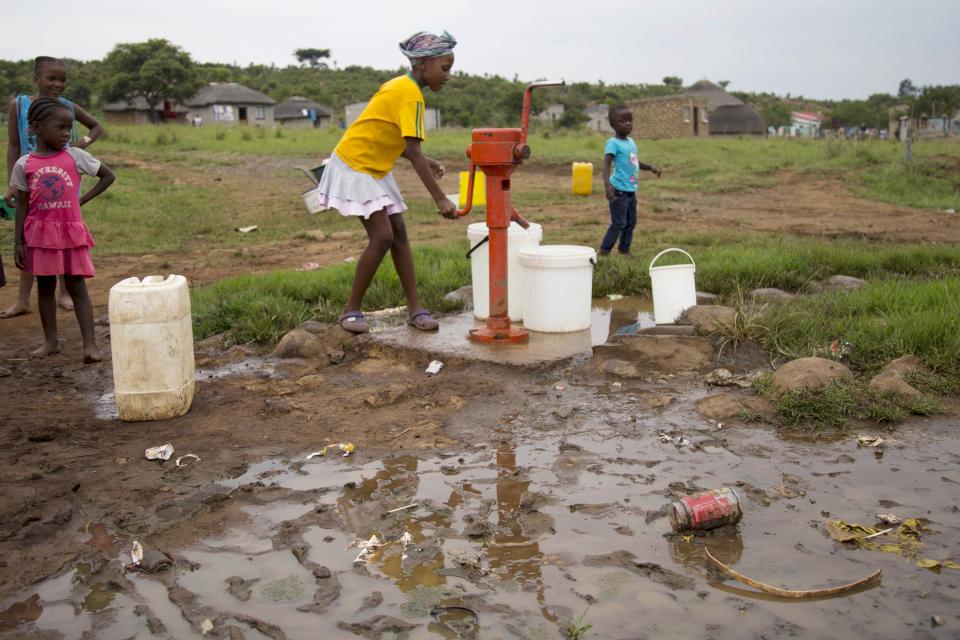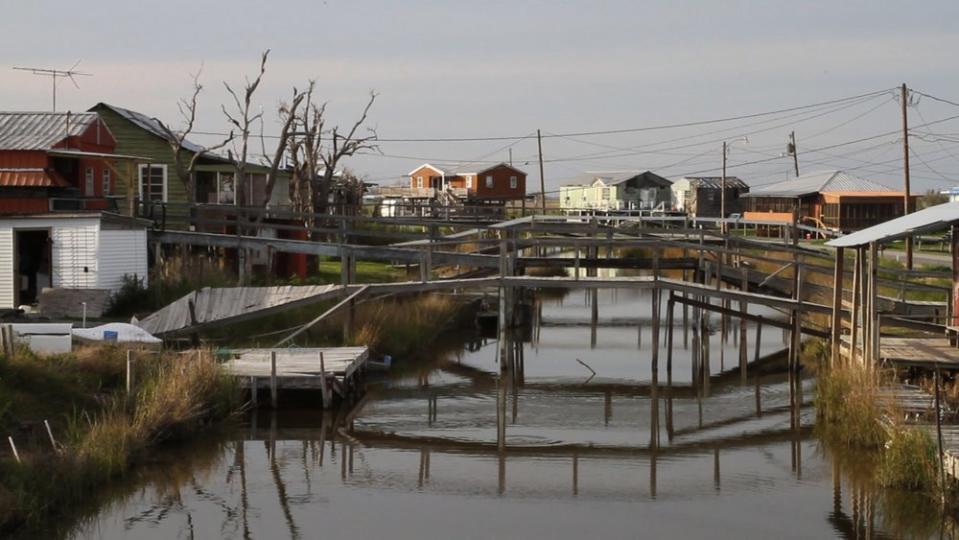The World Bank just issued a warning that will rattle global economies

REUTERS/Oswaldo Rivas
Economies across large swaths of the globe could shrink dramatically by 2050 as freshwater grows scarce because of climate change, the World Bank reported on Tuesday.
The Middle East could be hardest hit, with its gross domestic product falling as much as 14% by 2050 unless steps are taken to significantly reallocate water, the Washington-based institution said in a report.
Those measures could include efficiency efforts and investment in technologies such as desalination and water recycling, the World Bank said.
Global warming can cause extreme floods and droughts and can mean snowfall is replaced by rain, with higher evaporation rates, experts say.
It also can reduce mountain snowpack that provides water, and the melting of inland glaciers can deplete sources of runoff, they say. A rise in sea level can also lead to saltwater contaminating groundwater.
"When we look at any of the major impacts of climate change, they one way or the other come through water, whether it's drought, floods, storms, sea-level rise," Richard Damania, World Bank lead economist and lead author of the report, told reporters, according to Reuters.
"Water is of course at the center of life, but it's also at the center of economic activity," Damania added.

REUTERS/Oswaldo Rivas
Freshwater shortages could take a toll on economic sectors ranging from agriculture to energy, the World Bank said, and rising economies such as China and India could be hard hit.
In the Sahel belt that stretches across Africa below the Sahara, GDP could well shrink some 11% with water scarcity, the World Bank said, noting that a similar impact would be felt in Central Asia.
But measures to reallocate freshwater could show gains in some regions, the bank said. A shift in allocation could lead to GDP growth of about 11% by 2050 in Central Asia, the bank noted.
The World Bank also advocated pricing water consumption, a proposal that has stirred controversy and is opposed by those who do not think water should not have any price tag.
"If you're making money out of water, particularly if you're using a lot of water as a commercial user, then it's reasonable to suggest that you pay minimally enough to cover the cost of providing you with that water," Damania said.
"This might well mean free water if you are exceedingly poor," he said.

REUTERS/Oswaldo Rivas
About one-quarter of the world's population, or some 1.6 billion people, live in countries where water already is scarce, according to the World Bank.
Millions in peril
Water scarcity would not have an equal impact across the globe, and Western European and North American economies would most likely be spared, according to World Bank models.
But while those regions may escape the worst effects of water scarcity, populations within them will most likely suffer from climate change, which would have economic consequences for those countries.
Along the US Gulf coast, some people are already being relocated because of rising sea levels and other changes related to shifting climate.
Isle de Jean Charles, a low-lying island off the coast of Louisiana, has seen its land area reduced from a size of 15,000 acres in the middle of last century to a strip of land about 320 acres in size now.

REUTERS/Oswaldo Rivas
The US government has set aside $52 million to help the few dozen residents of Isle de Jean Charles resettle (though some of those residents may resist leaving), but the island's fate augurs poorly for other more heavily populated regions of the country that sit near or below sea level.
"If you have a hard time moving dozens of people, it becomes impossible in any kind of organized or fair way to move thousands, or hundreds of thousands, or, if you look at the forecast for South Florida, maybe even millions," Mark Davis, the director of the Tulane Institute on Water Resources Law and Policy, told The New York Times.
Last month, 175 nations signed a deal reached last year in Paris to slow global warming and cut greenhouse-gas emissions.
(Reporting by Sebastien Malo and editing by Ellen Wulfhorst for the Thomson Reuters Foundation, the charitable arm of Thomson Reuters.)
See Also:

 Yahoo Finance
Yahoo Finance 
